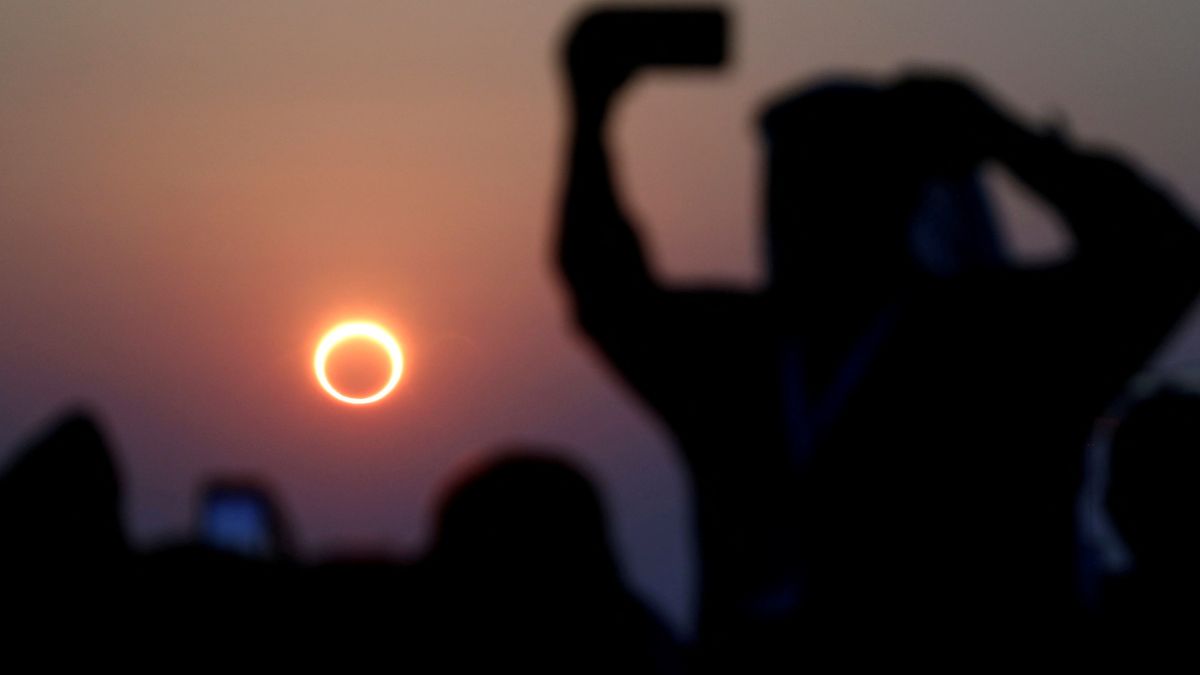Just days after a stunning partial lunar eclipse, skywatchers will soon witness another awe-inspiring celestial event on Wednesday (October 2)— an annular solar eclipse, often referred to as the “Ring of Fire” eclipse.
This rare spectacle occurs when the Moon moves between the Sun and Earth but doesn’t entirely block the Sun. Instead, the Sun’s edges remain visible, creating a glowing ring around the Moon’s silhouette.
But how rare is this phenomenon? What sets it apart from a total solar eclipse? And the big question — will it be visible from India?
Here’s everything you need to know about this highly anticipated cosmic wonder.
How is an annular solar eclipse different?
A solar eclipse occurs when the Moon moves between the Earth and the Sun, casting a shadow on Earth.
However, a total solar eclipse happens when the Moon fully blocks the Sun, revealing the Sun’s outer atmosphere, or corona. During a total eclipse, the sky darkens dramatically, creating one of the most breathtaking natural displays.
In contrast, an annular solar eclipse occurs because the Moon is at its farthest point from Earth (known as apogee) and doesn’t completely cover the Sun. This leaves a glowing ring of light around the Moon, known as the “ring of fire."
But what makes solar eclipses a rare phenomenon?
Solar eclipses occur only during a new moon when the Sun and Moon align on the same side of Earth.
Although a new moon happens about every 29.5 days, solar eclipses are far less frequent, occurring only two to five times a year.
Why? Because the Moon does not orbit Earth in the same plane as the Earth orbits the Sun. Moon’s orbit is tilted about five degrees relative to Earth’s orbit around the Sun. Most of the time, the Moon’s shadow either passes above or below Earth, missing it entirely. This tilt makes solar eclipses a rare and exciting event.
The last similar event occurred on October 14, 2023, making this upcoming eclipse a highly anticipated sight for astronomers. While the “ring of fire” effect may only last a few minutes depending on your location, it promises to be a breathtaking experience for those in its path.
Where will it be visible?
The annular phase of the eclipse on October 2 will last approximately 7 minutes and 25 seconds at its peak, obscuring about 93 per cent of the Sun’s disk.
While only around 175,000 people live directly in the path of annularity, millions across South America will have the opportunity to witness this spectacular event, particularly Hanga Roa in Chile and Puerto Deseado in Argentina.
Beyond South America, other regions where the eclipse can be observed are the Pacific Ocean, the Arctic, Peru, and Fiji. Cities like Honolulu (Hawaii, USA), Suva (Fiji), Santiago (Chile), São Paulo (Brazil), Montevideo (Uruguay), and Buenos Aires (Argentina) will experience a partial eclipse.
It is important to remember that one should wear “eclipse glasses” or use a safe handheld solar viewer to witness a solar eclipse, says NASA. One should avoid looking at the Sun through the naked eye, or any optical devices, such as camera lenses, telescopes, or binoculars as concentrated rays can damage the filters and cause serious eye injuries.
Will it be visible in India?
Unfortunately, no.
According to Indian Standard Time (IST), the solar eclipse will begin at 9:13 pm and end at 3:17 am. As it will take place during nighttime in India, it will be impossible to observe the phenomenon from any part of the country.
Countries like Pakistan, Sri Lanka, Nepal, Afghanistan, and the UAE will also miss out, along with regions in Europe, Africa, northern parts of North America, Australia, and Mauritius.
When will the next solar eclipse happen?
If you miss the solar eclipse in October 2024, there’s no need to fret. An annular solar eclipse is set to grace the skies in February 2027, sweeping across parts of Chile and Argentina. Additionally, a total solar eclipse will take place in 2026, casting its shadow over northern Greenland, Iceland, and Spain.
With some thoughtful planning and a bit of travel, you can witness the stunning “ring of fire” in the years ahead.
With input from agencies
)